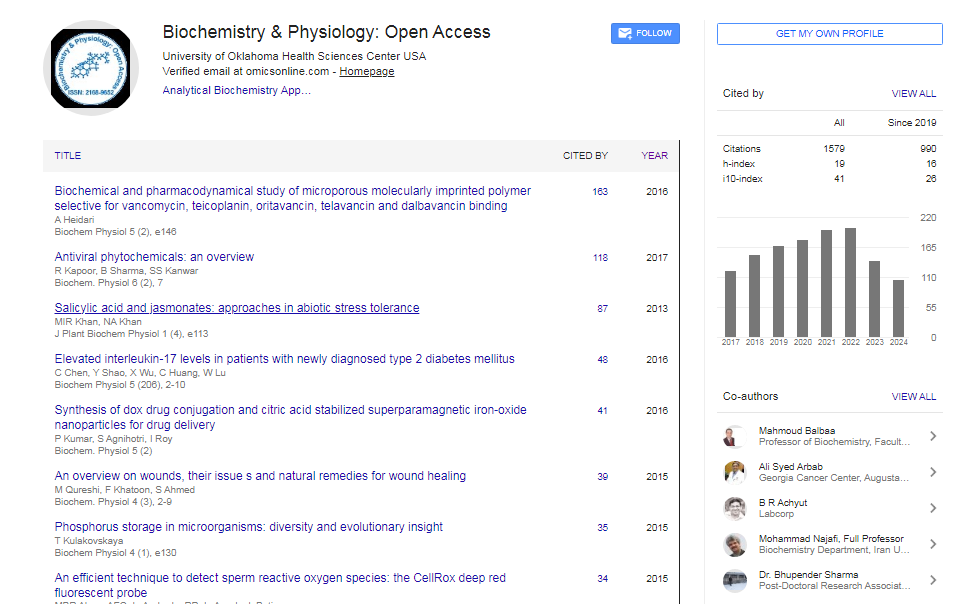Review Article
Changing Paradigms in Cell Biology: Their Implication and Possible Applications
| Engwa Azeh Godwill* | |
| Chemical Sciences Department, Faculty of Natural and Applied Sciences, Godfrey Okoye University, P.M.B 01014 Thinkers Corner, Enugu Nigeria | |
| Corresponding Author : | Engwa Azeh Godwill Chemical Sciences Department, Faculty of Natural and Applied Sciences Godfrey Okoye University, P.M.B 01014 Thinkers Corner, Enugu Nigeria Tel: (+234) 8068473306 E-mail: engwagodwill@gmail.com |
| Received September 22, 2015; Accepted October 13, 2015; Published October 20, 2015 | |
| Citation: Godwill EA (2015) Changing Paradigms in Cell Biology: Their Implication and Possible Applications. Biochem Physiol 4:184. doi: 10.4172/2168-9652.1000184 | |
| Copyright: © 2015 Godwill EA. This is an open-access article distributed under the terms of the Creative Commons Attribution License, which permits unrestricted use, distribution, and reproduction in any medium, provided the original author and source are credited. | |
Abstract
The evolution of cell biology in the 20th century has evoked some remarkable changes in the existing paradigms. The discovery of alternative splicing, overlapping genes and protein splicing has shifted the one gene-one protein paradigm to several proteins. Proteins are no more the only catalytic macromolecule since the discovery of ribozymes. Genetic material was known to be stable in the genome and not mobile until the discovery of transposons. RNA editing has made possible the identification of certain missing genes and viruses are no longer considered the smallest infections agents after prions were discovered. Though not conclusive, recent findings suggest the possibility of transcription to occur in the nucleus. All these ground breaking discoveries are making substantial breakthrough in biological sciences particularly in understanding some cellular processes, their mechanisms on gene expression and regulation as well as the pathogenesis of certain illnesses. Also, these discoveries have revealed some potential drug targets and presently, some of the implicated biomolecules are being exploited for various pharmaceutical and biomedical applications.

 Spanish
Spanish  Chinese
Chinese  Russian
Russian  German
German  French
French  Japanese
Japanese  Portuguese
Portuguese  Hindi
Hindi 